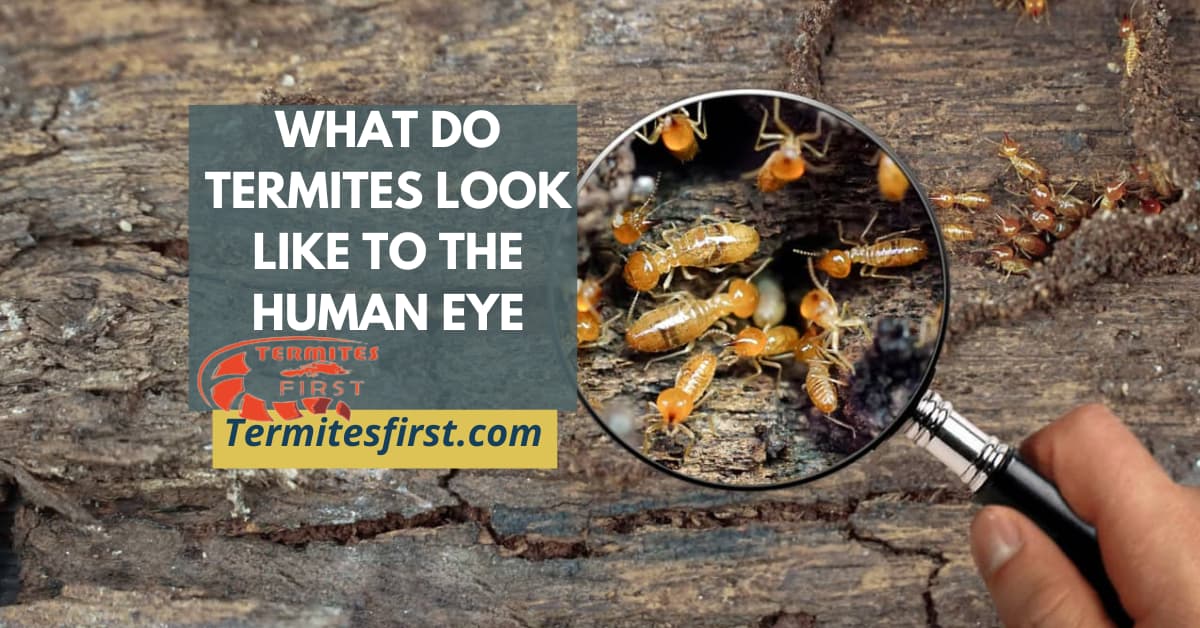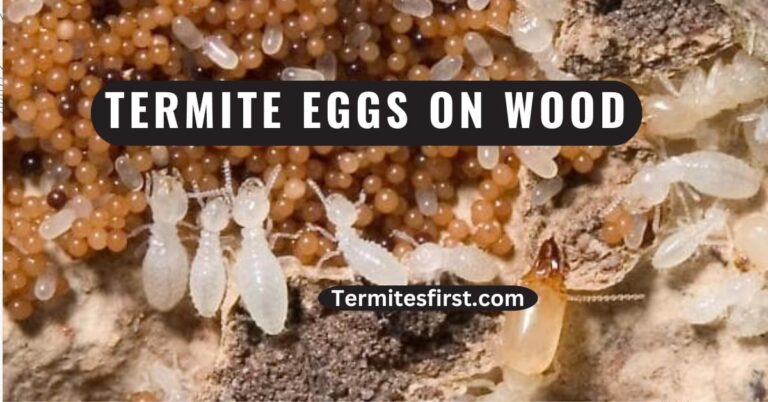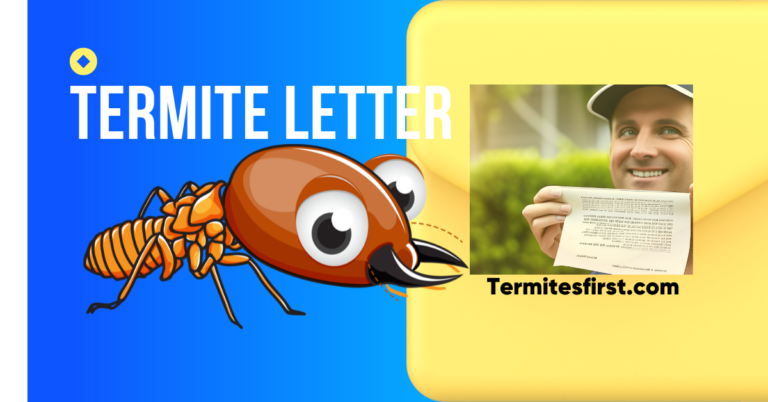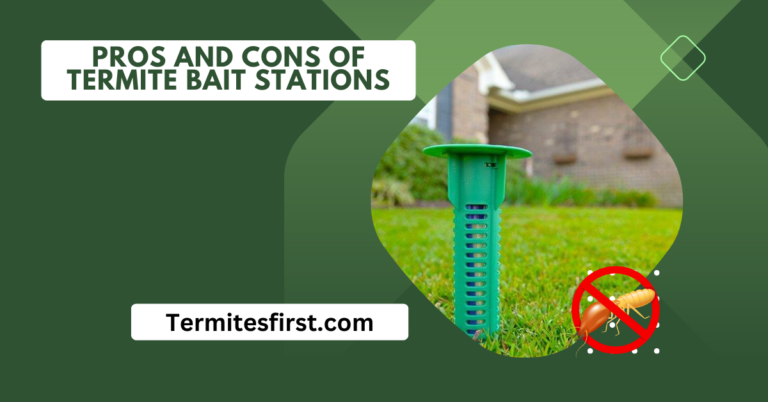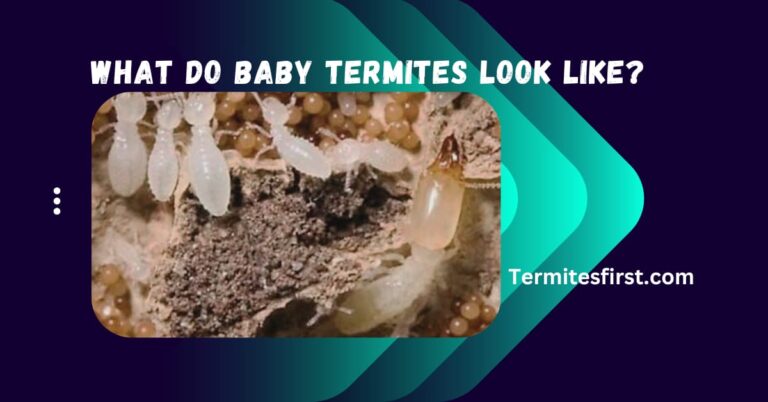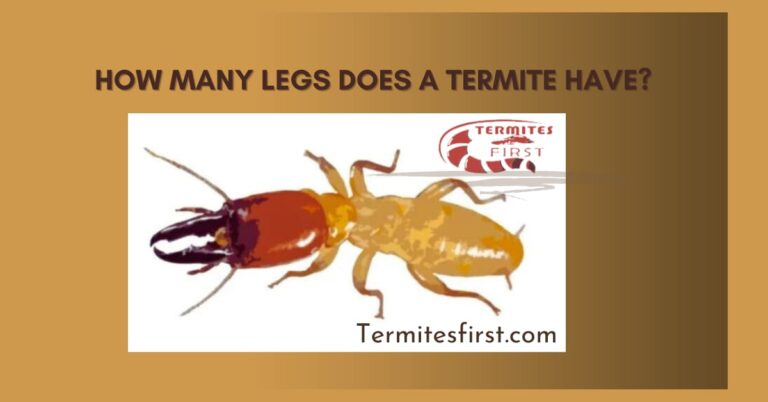What Do Termites Look Like to the Human Eye? Discover Now!
I often find myself wondering what do termites look like to the human eye. These tiny termite larvae can be tough to spot, especially when they’re busy munching away at wood, like brown termites and individual termites, or even winged termites. At first glance, wood termites and ants might seem harmless, but their destructive nature tells a different story.
Termites and ants come in various sizes and colors, making them hard to identify. Some are light brown, while others are almost translucent. It’s easy to overlook them until it’s too late. Knowing how to recognize them, like an ant, is crucial for protecting my home. I want to help you understand their appearance so you can catch them before they cause damage. Let’s dive into the details and learn more about these sneaky pests.
Key Takeaways
- Termites are small, typically light-colored insects that can be hard to spot. Knowing their physical traits helps you identify them quickly before they cause damage.
- Look for signs of termite activity, such as mud tubes or damaged wood. Catching these early can save you from costly repairs later on.
- If you notice swarming insects or discarded wings, you may have a termite infestation. Act fast to prevent further damage.
- Termites prefer damp and warm areas, often found in wood, soil, or even in basements. Understanding their habitats can help you protect your home.
- Many people overlook termites because they resemble ants or other insects. Familiarizing yourself with the differences can help you spot them sooner.
- Termites are most active during warmer months, especially in the evening. Keep an eye out during this time to catch any activity.
Physical Traits of Termites
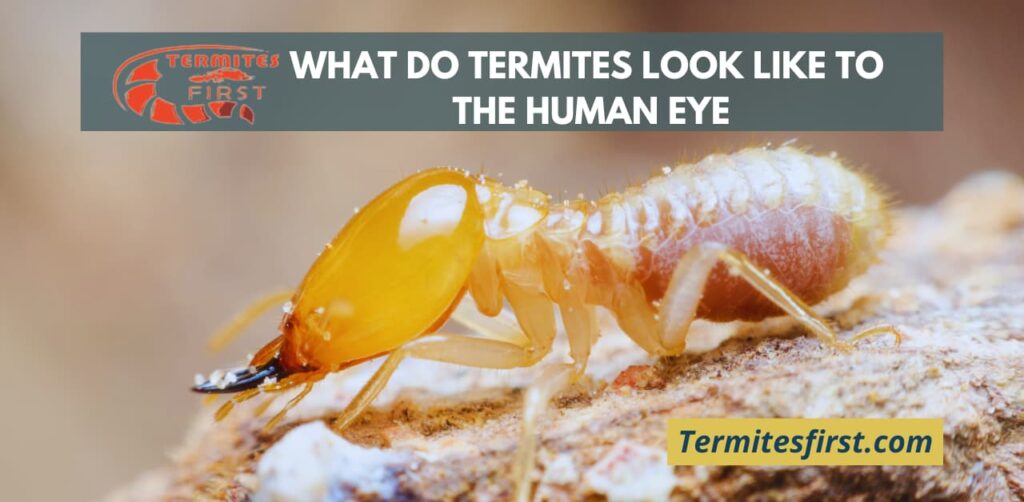
Size and Color
Termites vary in size and color based on their species and caste. Most adult termites measure between 1/4 inch to 1 inch long. Worker termites often appear pale or white, while soldier termites are typically darker, with a brown or black hue. These differences help identify their roles within the colony.
I find it interesting how these color variations can signal different functions. For instance, the lighter workers blend into their environment, making them less visible to predators. On the other hand, the soldiers’ darker colors may help them stand out when defending the nest.
Soldier Termites
Soldier Termites
Soldier termites possess unique features that set them apart from others. They have larger heads and enlarged mandibles. These strong jaws help them protect the colony from threats. The darker coloration of soldier termites makes them easily recognizable.
The mandibles are impressive structures. They can crush or bite intruders effectively. I once observed a soldier termite warding off an ant that approached its nest. It was fascinating to see how it used its powerful jaws to defend its home.
Body Structures
Termites have a distinct body structure that lacks segmentation in the thorax and abdomen. This absence creates a smooth appearance. Unlike ants, which have a noticeable waist, termites appear more uniform in shape.
This feature is important for identifying termites quickly. Their bodies look more streamlined, which aids movement through narrow spaces in wood or soil. I remember being surprised at how easily they navigate through tight spots when I first studied them.
The lack of segmentation also plays a role in their behavior. It allows for better cooperation among castes during tasks like foraging or building nests. Each caste works together seamlessly, contributing to the colony’s success.
In summary, understanding the physical traits of termites helps us appreciate their role in nature. Their size, color, and unique features contribute to their survival strategies and social structure.
Identifying Termite Activity
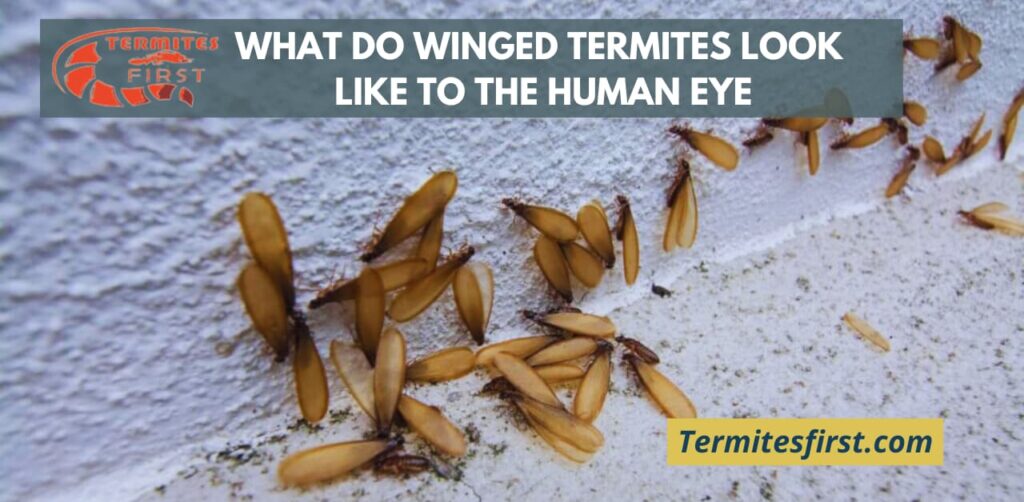
Swarming Behavior
Termites often swarm during specific seasons. This usually happens in the spring or early summer. During this time, live termites leave their colonies to mate and establish new colonies. Observing swarming behavior can help identify an active infestation. I remember seeing a swarm near my home one warm evening. It was alarming to see so many flying insects.
Swarming termites have wings and look different from worker termites. They are often mistaken for flying ants. Noticing these swarms is crucial since it indicates that termites are nearby and could be damaging your property.
Mud Tubes
Mud tubes are another sign of termite activity. These tubes serve as highways for termites. They protect them from predators and help retain moisture. You can find mud tubes in basements, crawl spaces, or along walls.
If you spot these tubes, it’s a clear indication of termite movement. They usually measure about the width of a pencil. I once found mud tubes leading up to my foundation, which prompted me to call a pest control expert immediately.
Discarded Wings
After swarming, termites shed their wings. These discarded wings often pile up near windowsills or doorways. Finding these wings is a significant clue in termite identification. It shows that termites have been active in your area.
I noticed some wings on my porch last summer. Upon closer inspection, I realized they were from termites. This discovery led me to check my home more thoroughly for signs of infestation.
Importance of Identification
Identifying termite activity is essential to prevent damage to your home. Termites can cause severe structural issues if left unchecked. Their appetite for wood means they can eat away at supports and beams over time.
By knowing what to look for, you can take action sooner rather than later. If you suspect termite activity, consider consulting a pest control professional. They can provide a thorough inspection and recommend treatment options.
Keeping your home safe from termites requires vigilance. Regular checks for swarming behavior, mud tubes, and discarded wings can save you from costly repairs down the line.
Recognizing Termite Infestations
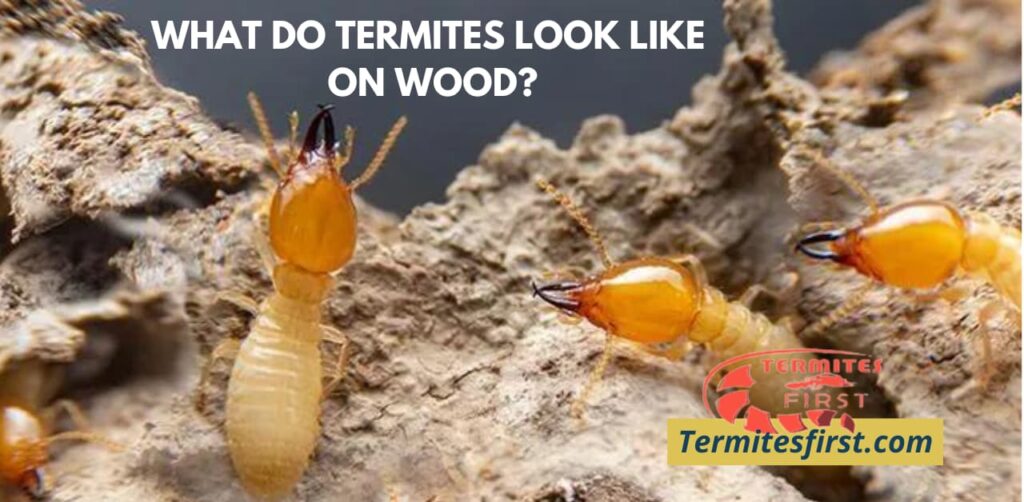
Distinct Frass
Frass is a key sign of termite infestations. It looks like small, wood-colored pellets. These droppings differ from other insects’ waste. Unlike cockroach droppings, which are dark and shiny, frass is dry and often resembles sawdust.
I remember seeing frass in my own home once. It was a clear indicator that I had a problem. Noticing these tiny pellets can alert you to a potential termite threat before the damage gets severe.
Structural Damage
Structural damage often signals a termite invasion. Look for hollowed wood or sagging floors in your home. These signs indicate that termites have been eating away at the wood. The damage might not be obvious at first.
For example, I once discovered soft spots in my floorboards. A closer look revealed extensive damage caused by termites. This experience taught me to always check for signs of termite presence in older homes.
Professional Inspection Tools
Using professional inspection tools helps detect hidden infestations. Termites often live within walls or foundations, making them hard to spot. Professionals use thermal imaging cameras and moisture meters to find these pests.
A thorough inspection can reveal subterranean termite colonies that are otherwise invisible. I hired an expert once, and it made all the difference. They found areas in my house where I would never have thought to look.
Swarming Termites
Swarming termites are another indication of infestation. These winged insects emerge during specific seasons. They search for new places to establish colonies.
During one spring, I noticed swarming termites around my porch light. It was alarming to see so many at once. Swarming indicates that there may be a nearby subterranean termite colony or even drywood termite infestations.
Preventing Termites
Preventing termites involves regular inspections and maintenance. Keep wood piles away from your home and fix leaks promptly. Sealing cracks in your foundation also helps deter these pests.
I learned the hard way about prevention after dealing with a major infestation. Taking proactive steps can save you from severe termite damage later on.
Common Habitats of Termites
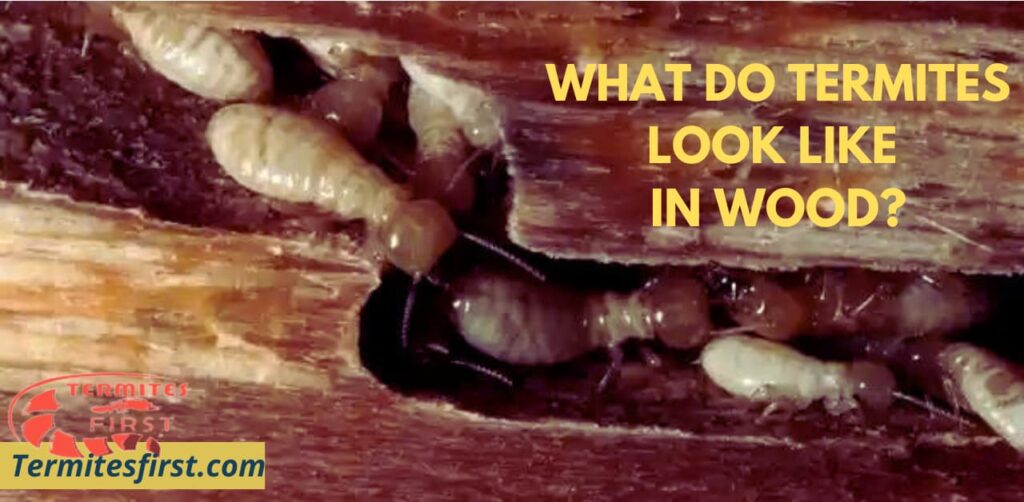
Underground Nests
Termites often build their nests underground. These nests provide protection and a stable environment. The soil helps maintain moisture, which termites need to survive. I find it interesting how these creatures can create complex tunnels that connect their nests to food sources.
Many termite species tend to burrow deep underground, which serves as a protective measure against predators and unfavorable weather. Homeowners might be unaware that these nests could be situated directly beneath them.
Decaying Wood
Decaying wood is another favorite spot for termites. They thrive on wood that is already damaged or rotting. This type of wood provides the necessary nutrients for growth. Softwoods, like pine and cedar, are particularly appealing to many termite species.
I have seen how quickly termites can destroy a piece of decaying wood. It’s alarming to think about how much damage they can cause in a short time. Homeowners should regularly check for signs of wood decay around their properties.
Moisture Sources
Moisture plays a crucial role in attracting termites. Areas with high humidity or standing water often see more termite activity. Basements and crawl spaces are common locations for infestations. Water leaks can create an inviting environment for these pests.
Certain termite species prefer moist environments over dry ones. They seek out places near water sources, such as rivers or ponds. I’ve noticed that homes near these areas are at higher risk for infestations.
Specific Wood Preferences
Different termite species have specific preferences when it comes to wood types. Some prefer softwoods, while others target hardwoods. For instance, Formosan termites typically attack softwoods, while drywood termites may choose hardwoods.
Understanding these preferences is vital for homeowners. It can help them take preventive measures against infestations. Regular inspections of wooden structures can save time and money in the long run.
Eggs and Colonies
Termite colonies consist of various members, including workers, soldiers, and reproductive individuals. The queen lays thousands of eggs each day, ensuring the colony’s growth. Most homeowners may never see the eggs since they are hidden within the nest.
Recognizing where termites might lay their eggs can prevent significant damage. Keeping an eye out for signs of infestation can be beneficial for protecting your home.
Why Termites Go Unnoticed
Small Size
Termites are tiny insects. Most species measure only a few millimeters long. Their small size makes them easy to overlook. I have often found them hiding in plain sight, like inside wooden structures or beneath the soil.
Due to their size, they blend into their surroundings. They can easily escape notice. Many homeowners do not realize they have a termite problem until it is too late.
Hidden Activity
Termite activity often occurs out of sight. They usually live within walls or underground. This makes it hard for people to see them. I remember reading about how termites can eat away at wood for years without detection.
Their nests are typically located deep in the ground or within the wood itself. This hidden lifestyle allows them to cause significant damage before being discovered.
Misconceptions About Swarming
Many believe that termites only cause damage during swarming events. However, this is not true. Swarming is just one part of their life cycle. Most of their destructive work happens quietly and unseen.
I learned that swarming occurs when conditions are right, usually in spring or summer. Even then, not all termites swarm at once. Most of the time, they stay hidden, working diligently.
Reasons for Being Overlooked
People often do not know what to look for regarding termites. They assume these pests are large and obvious when, in fact, they are quite small. This misunderstanding leads many to ignore signs of infestation.
Common signs include mud tubes on walls or discarded wings near windows. These signs may go unnoticed because they are subtle and blend with the environment.
Importance of Awareness
Being aware of termite behavior is crucial for prevention. Homeowners should regularly inspect their properties for signs of termites. Catching an infestation early can save significant costs in repairs.
I think it’s essential to educate others about these pests. Understanding what termites look like and where they hide can help prevent serious damage.
Distinguishing Termites from Other Insects
Body Structure
Termites have a unique body structure that sets them apart from other insects. Their bodies are soft and cylindrical, unlike the more segmented bodies of ants. The most notable difference is in their antennae. Termites have straight antennae, while winged ants possess bent or elbowed antennae.
The waist shape also differs significantly. Termites have a broad waist, making them look thicker in the middle. Ants, on the other hand, have a narrow waist that gives them a more slender appearance. This distinction helps me easily identify termites when I see them.
Behavior and Habitat
Termites and carpenter ants behave differently and prefer different habitats. Termites live in large colonies and often create nests in wood or underground. They thrive in moist environments, which is why they can be found near water sources.
Carpenter ants, however, do not eat wood like termites do. Instead, they excavate wood to create nests. They prefer dry wood and often build their colonies above ground. Understanding these differences is essential for pest control. I’ve noticed that when people misidentify these insects, it can lead to improper treatment methods.
Frass Differences
Frass is another way to differentiate between termites and powderpost beetles. Termite frass looks like tiny pellets or grains of sand. It is usually light-colored due to the cellulose they consume from wood.
In contrast, powderpost beetle frass appears as fine dust or powder. This dust results from the beetles boring into wood and eating it over time. The texture and appearance of frass can help you determine which pest is present in your home.
If you find frass around your property, check its texture closely. Knowing how to identify these signs can save you a lot of trouble down the line.
Daily Activity Patterns of Termites
Nocturnal Habits
Termites are mainly nocturnal creatures. They often work at night when it’s cooler. This helps them avoid predators and conserve moisture. I find it interesting how these insects adapt their schedules to survive in their environment.
During the day, they stay hidden in their tunnels. They only come out when it’s dark. Their peak activity times are usually just after sunset. This is when they forage for food. The darkness provides safety from birds and other threats.
Temperature and Humidity
Temperature and humidity play a big role in termite behavior. These insects thrive in warm, humid conditions. High humidity levels help keep their bodies hydrated. When temperatures drop or humidity decreases, termites become less active.
In my experience, observing these changes can be fascinating. For example, during a dry spell, I noticed fewer termites outside their nests. They seemed to retreat deeper into the soil to stay safe from drying out.
Division of Labor
Within a colony, termites have a clear division of labor. Workers handle most tasks like foraging for food and caring for the young. They tend to work during specific hours based on environmental factors.
For instance, worker termites often emerge at night to gather wood or plant material. This ensures they have enough food to support the colony. Alates, or winged reproductive termites, have different roles. They leave the nest during warm evenings to mate and start new colonies.
This structured way of working allows colonies to thrive. Each type of termite has its own job that supports the group as a whole. I admire how efficiently they operate as a team.
Conclusion:-
I’ve covered a lot about termites and what they look like. These little critters can be sneaky, hiding in plain sight. Knowing their physical traits and habits helps me spot them before they cause damage. It’s crucial to stay alert and recognize the signs of an infestation early.
If you think you might have termites or just want to learn more, don’t wait! Check your home and surroundings. Knowledge is power, and being informed can save you headaches down the road. Let’s keep our spaces termite-free together!
FAQ’s:-
Termites are small, typically 1/4 to 1/2 inch long. They have a soft body, straight antennae, and a broad waist. Their color ranges from white to light brown, depending on species.
Look for mud tubes on walls or foundations, discarded wings near windows, or hollow-sounding wood. These signs indicate termite activity and potential infestations.
No, there are over 2,000 termite species. They vary in size, color, and behavior. Subterranean, drywood, and dampwood termites are the most common types found in homes.
While wood is their primary food source, termites also consume paper, cardboard, and some plants. They thrive on cellulose found in these materials.
Termites can cause significant damage quickly. A colony can consume about 1/2 pound of wood per day. Early detection is crucial to prevent costly repairs.
Termites are usually active in warmer months, especially during spring and summer. They tend to swarm when humidity rises, making it essential to monitor your home during this time.
Yes! Keep wood away from soil, fix leaks promptly, and maintain proper ventilation. Regular inspections can help catch problems early before they escalate.

